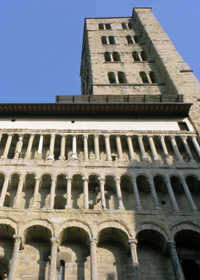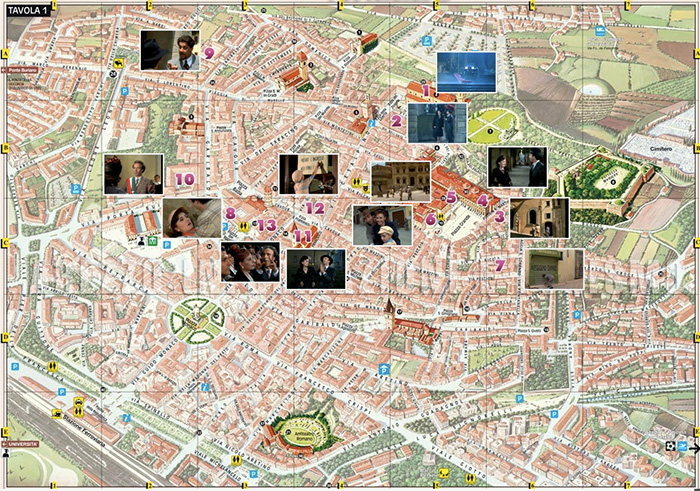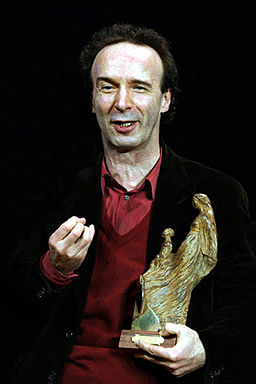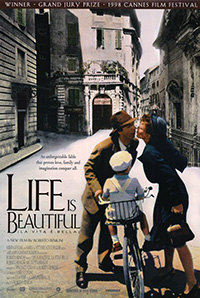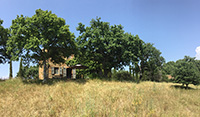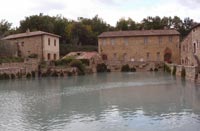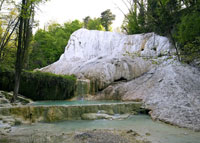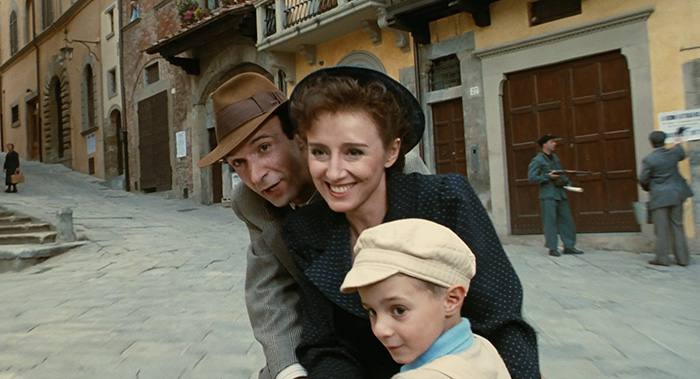 |
|
| I T E N G |
Bicycle scene in Arezzo, La vita è bella (Roberto Benigni,1997)
|
Films set in Tuscany | La vita è bella (Roberto Benigni,1997) |
| Life Is Beautiful (Italian: La vita è bella) is a 1997 Italian language film directed and co-written by Roberto Benigni. At the 71st Academy Awards in 1999, Benigni won the Academy Award for Best Actor and the film won both the Academy Award for Best Original Dramatic Score and the Academy Award for Best Foreign Language Film.
|
|
||
La vita è bella, Roberto Benigni | Trailer italiano
|
||
|
||
|
||
|
||
Piazza Grande in Arezzo
|
||
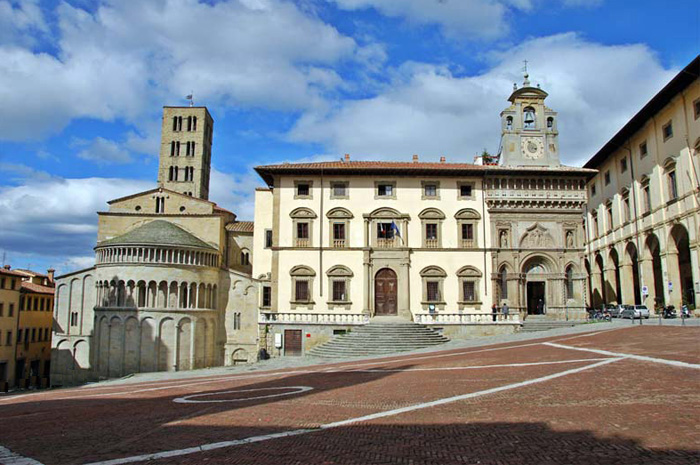 |
||
Piazza Grande in Arezzo, where the encounter scene between Guido and Dora was shot. Several parts of the movie were filmed in Arezzo. In this square is also the annual Giostra del Saracino, a ring sting game between the various districts of Arezzo
|
||
Cast |
||
Follow the trail of La Vita è Bella in Arezzo and walk past the cathedral, the Palazzo della Provincia, Piazza Grande and its palaces, the Loggia Vasari, the bookstore Cartolibreria Orefice, Sante Flora e Lucilla, Via Garibaldi, the school Gamurrini, the Basilica of San Francesco with the frescoes of Piero della Francesca and Caffe 'Dei Costanti.
|
||
| Follow the trail of La Vita è Bella in Arezzo:
1 La Cattedrale 2 Il Palazzo della Provincia 3 I palazzi di Piazza Grande 4 Le Logge Vasari 5 Il Palazzo della Fraternita dei Laici 6 Piazza Grande 7 La cartolibreria Orefice 8 Badia delle Sante Flora e Lucilla 9 Via Garibaldi 10 Scuole Elementari Gamurrini 11 Basilica di S. Francesco 12 Caffè dei Costanti 13 Teatro Petrarca [1]
|
||
The plot
|
||
Through the first part, the film depicts the changing political climate in Italy: Guido frequently imitates members of the National Fascist Party, skewering their racist logic and pseudoscientific reasoning (at one point, jumping onto a table to demonstrate his "perfect Aryan bellybutton"). However, the growing Fascist wave is also evident: the horse Guido steals Dora away on has been painted green and covered in antisemitic insults. Later during World War II, after Dora and her mother have reconciled, Guido, his Uncle Eliseo, and Giosuè are seized on Giosuè's birthday. They and many other Jews are forced onto a train and taken to a concentration camp. After confronting a guard about her husband and son and being told there is no mistake, Dora volunteers to get on the train in order to be close to her family. However, as men and women are separated in the camp, Dora and Guido never see each other during the internment. Thus, Guido pulls off stunts, such as using the camp's loudspeaker, to send messages, symbolic or literal, to Dora to assure her that he and their son are safe. Eliseo is executed in a gas chamber shortly after their arrival. Giosuè barely avoids being gassed himself as he hates to take baths and showers, and did not follow the other children when they had been ordered to enter the gas chambers. In the camp, Guido hides their true situation from his son. Guido explains to Giosuè that the camp is a complicated game in which he must perform the tasks Guido gives him. Each of the tasks will earn them points and whoever gets to one thousand points first will win a tank. He tells him that if he cries, complains that he wants his mother, or says that he is hungry, he will lose points, while quiet boys who hide from the camp guards earn extra points. Giosuè is at times reluctant to go along with the game, but Guido convinces him each time to continue on. Guido uses this game to explain features of the concentration camp that would otherwise be frightening for a young child: the guards are mean only because they want the tank for themselves; the dwindling numbers of children (who are being killed in gas chambers) are only hiding in order to score more points than Giosuè so they can win the game. He puts off Giosuè's requests to end the game and return home by convincing him that they are in the lead for the tank, and need only wait a short while before they can return home with their tank. Guido eventually buys additional time by intentionally getting Giosuè mixed in with nearby German schoolchildren, and briefly working as a servant for the same kids in order to help keep the other officials from noticing that Giosuè is actually Italian. Despite being surrounded by the misery, sickness, and death at the camp, Giosuè does not question this fiction because of his father's convincing performance and his own innocence. Guido maintains this story right until the end when, in the chaos of shutting down the camp as the Allied forces approach, he tells his son to stay in a box until everybody has left, this being the final competition before the tank is his. As the camp is in chaos Guido goes off to find Dora, but while he is out he is caught by a German soldier. An officer makes the decision to execute Guido. Guido is led off by the soldier to be executed. While he is walking to his death, Guido passes by Giosuè one last time, still in character and playing the game. The next morning, Giosuè emerges from the sweatbox, just as a U.S. Army unit led by a Sherman tank arrives and the camp is liberated. Giosuè is elated and is convinced he has won the game and the prize. The captives in the concentration camp also emerge from hiding. The prisoners travel to safety, accompanied by the Americans. While they are traveling, the soldiers allow Giosuè to ride on the tank with them. Giosuè soon spots Dora in the procession leaving the camp. Giosuè and Dora are reunited and are extremely happy to see each other. In the film, Giosuè is a young boy; however, both the beginning and ending of the film are narrated by an older Giosuè recalling his father's story of sacrifice for his family.
|
||
|
||
|
||
|
||
Scenes La Vita è Bella, Piazza Grande (Arezzo)
|
||
|
||
|
||
|
||
|
||
La Vita è Bella, Cartolibreria Orefice (Arezzo)
|
||
|
||
|
||
|
||
La Vita è Bella, Basilica di San Francesco (Arezzo)
|
||
|
||
|
||
|
||
La Vita è Bella, Cattedrale di San Donato (Arezzo)
|
||
|
||
|
||
|
||
La Vita è Bella, Le Logge Vasari di Arezzo
|
||
|
||
|
||
|
||
La Vita è Bella, Teatro Signorelli (Cortona)
|
||
|
||
|
||
|
||
La Vita è Bella, Castiglion Fiorentino
|
||
|
||
|
||
|
||||
This article incorporates material from the Wikipedia article Life Is Beautiful, published under the GNU Free Documentation License. |
||||
|
||||
Podere Santa Pia |
Podere Santa Pia, giardino |
|||
 |
||||
San Gimignano |
Siena, Duomo |
Prato was de locatie voor Giuseppe Bertolucci’s Berlinguer, ti voglio Bene, waarin Roberto Benigni debuteerde. |
||
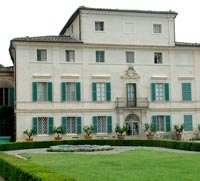 |
||||
Bagno Vignoni |
Bagno San Filippo |
Villa Geggiano |
||
| Bagno Vignoni was the location in which the majority of Andrei Tarkovsky's 1983 film Nostalghia were shot. | Bagno San Filippo was the location in which parts of Alice Rohrwacher's 2014 film Le Meraviglie were shot. | Villa di Geggiano was the location for Bernardo Bertolucci's Stealing Beauty (Io ballo da sola).
|
||
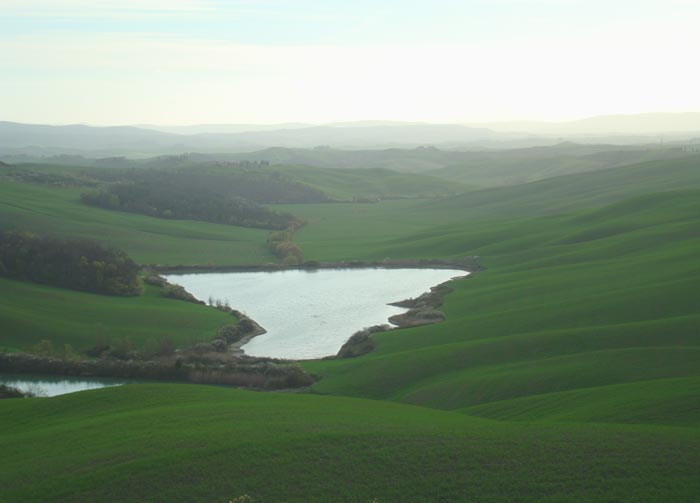 |
||||
Crete Senesi, north of Podere Santa Pia |
||||

